Abstract
Proficiency testing results were used to compare the kinetic and end-point versions of the single radial immunodiffusion method for quantitating human serum immunoglobulins. Statistical analysis of the results indicated that the results were not normally distributed but that the log normal distribution gives the best fit of any of the well-known frequency distributions. Consequently, statistical analysis of immunoglobulin results must be log transformed before parametric statistical tests can be appropriately applied. In general, there were no significant differences in level, precision, or interlaboratory comparability for these two methods. However, levels were different for participants using Hyland reagents, and better interlaboratory comparability was achieved by the end-point assay for immunoglobulin M. There were no significant differences in reported levels when compared by manufacturer within the same method.
Full text
PDF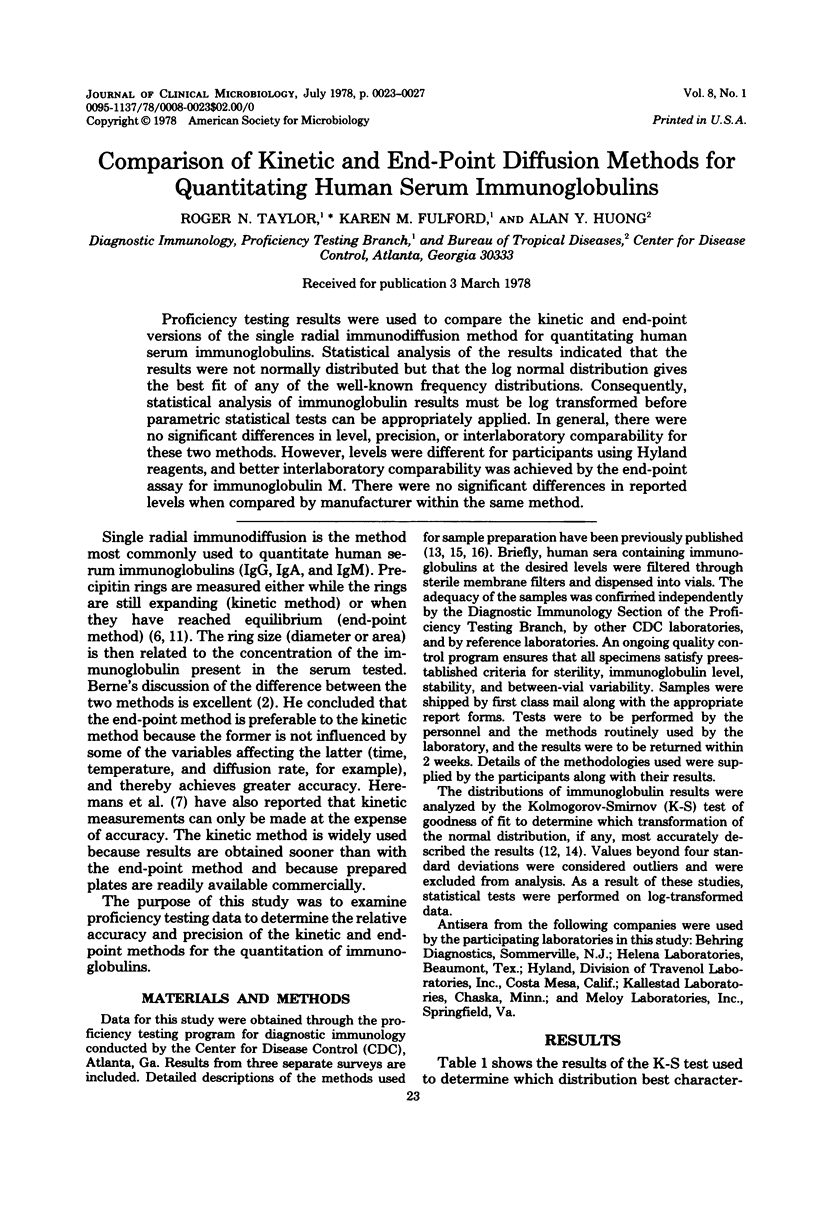
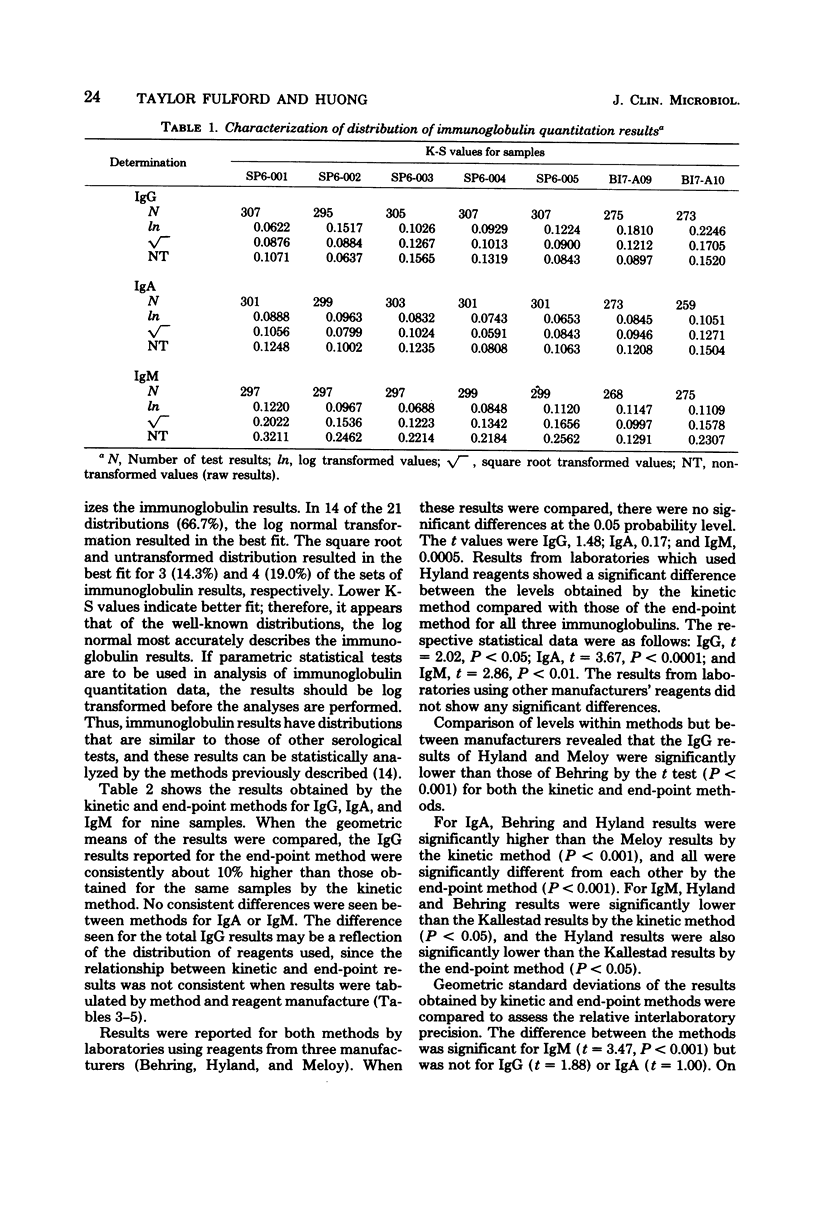
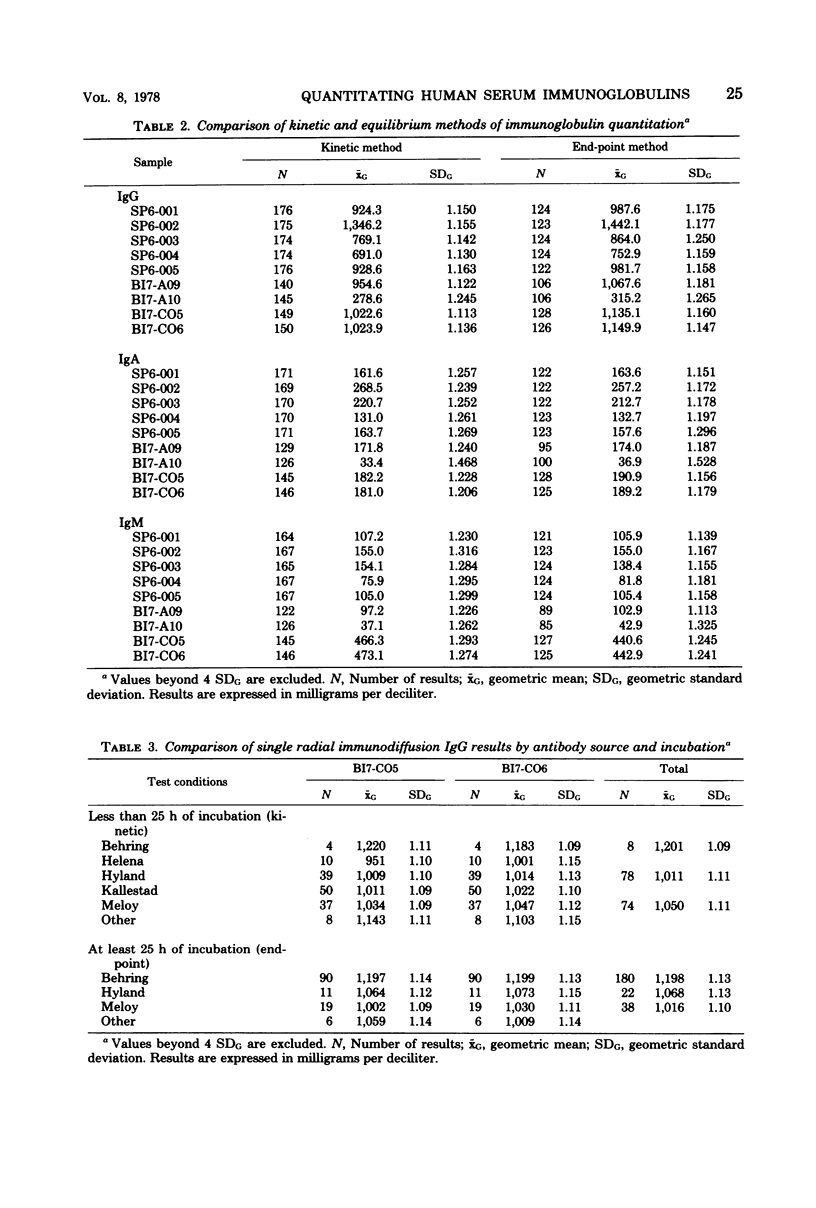
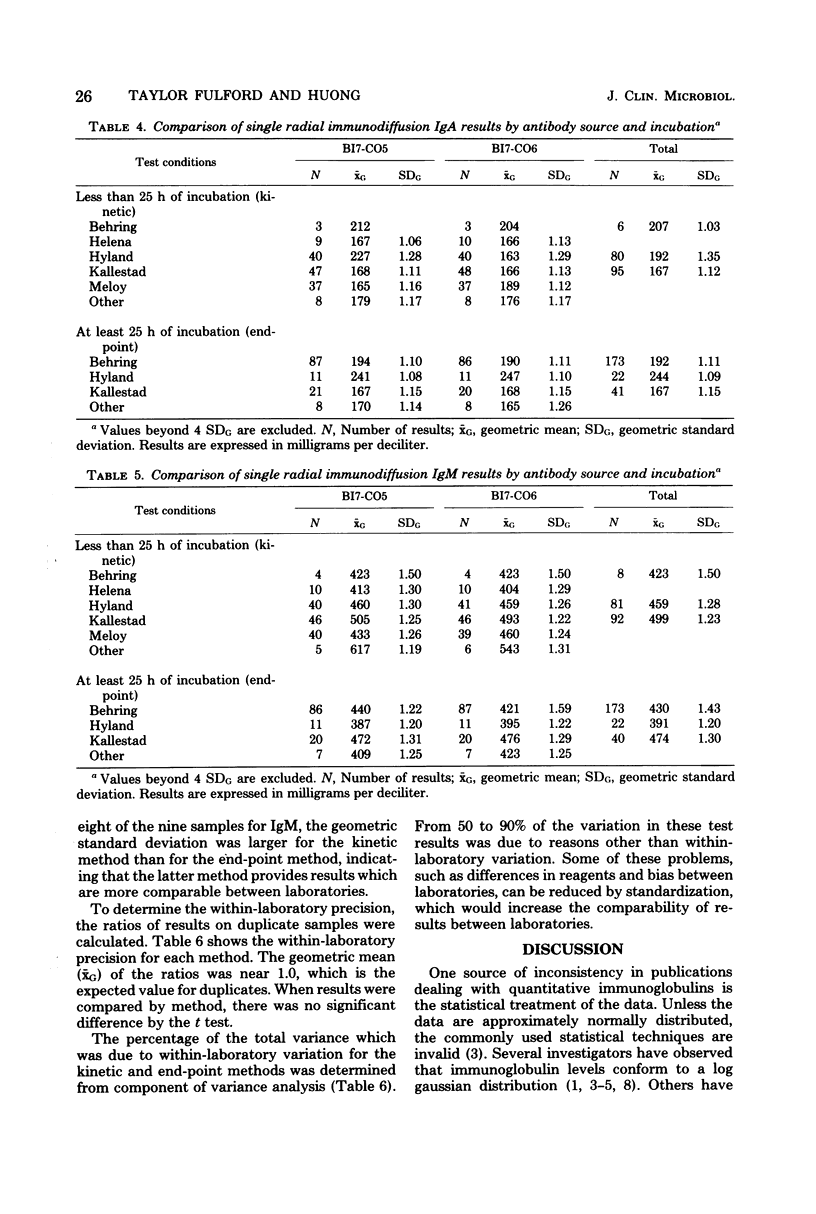
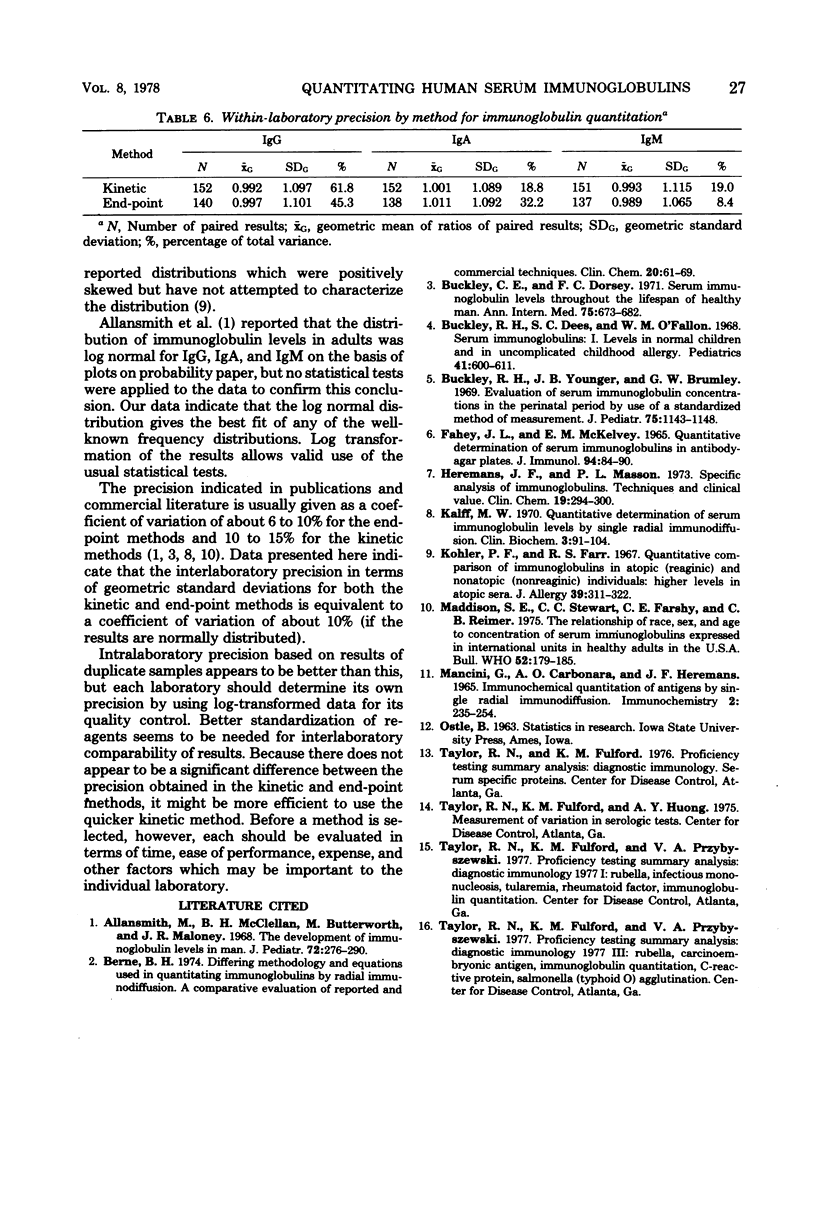
Selected References
These references are in PubMed. This may not be the complete list of references from this article.
- Allansmith M., McClellan B. H., Butterworth M., Maloney J. R. The development of immunoglobulin levels in man. J Pediatr. 1968 Feb;72(2):276–290. doi: 10.1016/s0022-3476(68)80324-5. [DOI] [PubMed] [Google Scholar]
- Berne B. H. Differing methodology and equations used in quantitating immunoglobulins by radial immunodiffusion--a comparative evaluation of reported and commercial techniques. Clin Chem. 1974;20(1):61–69. [PubMed] [Google Scholar]
- Buckley C. E., 3rd, Dorsey F. C. Serum immunoglobulin levels throughout the life-span of healthy man. Ann Intern Med. 1971 Nov;75(5):673–682. doi: 10.7326/0003-4819-75-5-673. [DOI] [PubMed] [Google Scholar]
- Buckley R. H., Dees S. C., O'Fallon W. M. Serum immunoglobulins. I. Levels in normal children and in uncomplicated childhood allergy. Pediatrics. 1968 Mar;41(3):600–611. [PubMed] [Google Scholar]
- Buckley R. H., Younger J. B., Brumley G. W. Evaluation of serum immunoglobulin concentrations in the perinatal period by use of a standardized method of measurement. J Pediatr. 1969 Dec;75(6):1143–1148. doi: 10.1016/s0022-3476(69)80370-7. [DOI] [PubMed] [Google Scholar]
- FAHEY J. L., MCKELVEY E. M. QUANTITATIVE DETERMINATION OF SERUM IMMUNOGLOBULINS IN ANTIBODY-AGAR PLATES. J Immunol. 1965 Jan;94:84–90. [PubMed] [Google Scholar]
- Heremans J. F., Masson P. L. Specific analysis of immunoglobulins. Techniques and clinical value. Clin Chem. 1973 Mar;19(3):294–300. [PubMed] [Google Scholar]
- Kalff M. W. Quantitative determination of serum immunoglobulin levels by single radial immunodiffusion. Clin Biochem. 1970 Mar;3(1):91–104. [PubMed] [Google Scholar]
- Kohler P. F., Farr R. S. Quantitative comparison of immunoglobulins in atopic (reaginic) and nonatopic (nonreaginic) individuals: higher gamma-D levels in atopic sera. J Allergy. 1967 May;39(5):311–322. doi: 10.1016/0021-8707(67)90095-0. [DOI] [PubMed] [Google Scholar]
- Maddison S. E., Stewart C. C., Farshy C. E., Reimer C. B. The relationship of race, sex, and age to concentrations of serum immunoglobulins expressed in international units in healthy adults in the USA. Bull World Health Organ. 1975;52(2):179–185. [PMC free article] [PubMed] [Google Scholar]
- Mancini G., Carbonara A. O., Heremans J. F. Immunochemical quantitation of antigens by single radial immunodiffusion. Immunochemistry. 1965 Sep;2(3):235–254. doi: 10.1016/0019-2791(65)90004-2. [DOI] [PubMed] [Google Scholar]


